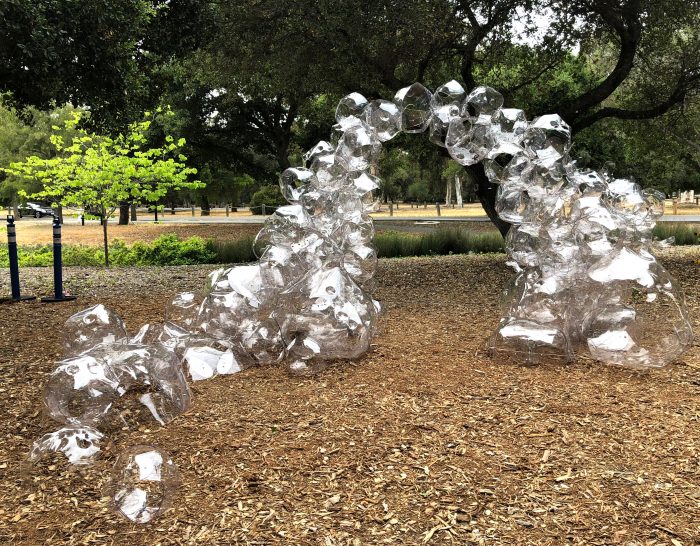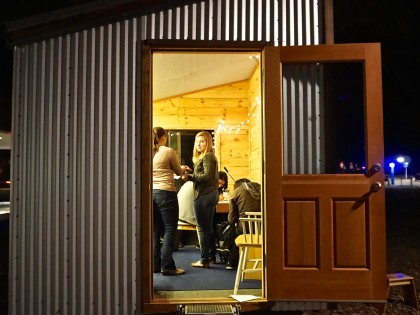An installation by students of Stanford's Architectural Design program

The installation’s structure is comprised of plastic bubbles of varying sizes, assembled to form a translucent, cloud-like mass.Students explored how surface deformation, through dimpling and curvature, increased the strength of the panel. The final form embodies a viral mass upon its environment as it ebbs and ows, while creating a lens through which to see nature warped and made unfamiliar. Students applied gold nanoparticle-based structural color to the panels, creating a pink, fluid layer on the surface. The nanoparticles refract, scatter and interfere with the light waves, creating color through the minute geometries and articulation of the surface.
CEE32H: Responsive Structures is a design-build course offered by Stanford’s Architectural Design Program. This year, the students were asked to mine the structural, spatial and optical possibilities of sheet plastic while exploring the relevance of plastic in contemporary culture.
This course was taught by Architect Beverly Choe from Stanford Architecture, with Structural Engineer Jun Sato of University of Tokyo. Teaching Assistants: Alex Lopez and Courtney Urbancsik.
Student participants: Nicole Aw, Ben Barnett, Jerry Chen, Carlino Cuono, Jennah Jones, Anna Lai, Gabby Macias, Goran Puljic, Joel White and K. Euan Yang.
A special thanks to Alice Lay, Alan Dai and Katherine Sytwu of the Dionne Group in Materials.
Science and Engineering Department for collaborating in developing nanoparticle mixtures.






